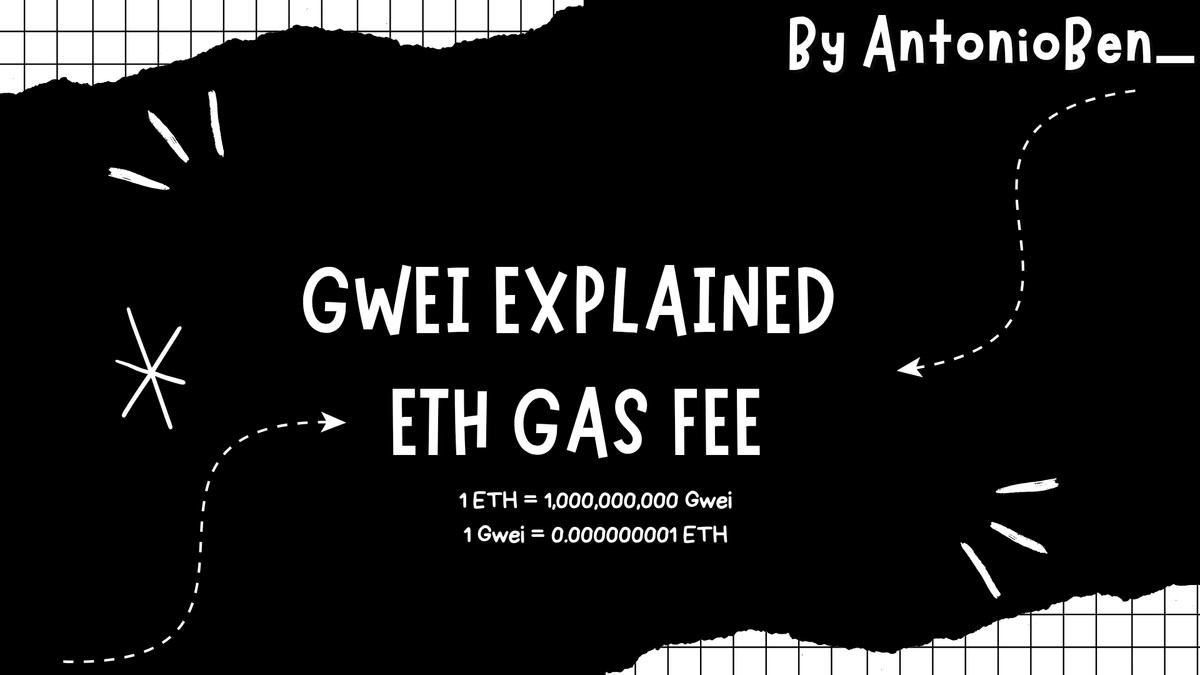What Is Gwei? Ethereum gas fee explained

INTRODUCTION
If you've spent time exploring Ethereum or decentralized finance (DeFi), you've likely come across the word "Gwei" usually in the context of gas fees. For new users, this might feel like confusing jargon, but understanding Gwei is essential for navigating the Ethereum ecosystem.
In this article, we’ll break down what Gwei is, why it matters, how gas works, and how this tiny unit of Ether plays a vital role in everything from basic transactions to high-volume decentralized applications.
What Is Gwei?
Gwei is a denomination of Ether (ETH), the native cryptocurrency of the Ethereum network. While Ether is commonly used to describe large amounts, Gwei is used for small payments, especially gas fees, the cost required to perform operations on the network.
1 ETH = 1,000,000,000 Gwei
1 Gwei = 0.000000001 ETH (that’s 10⁻⁹)
Just like cents to dollars or satoshis to Bitcoin, Gwei helps Ethereum users handle fractional amounts of ETH more clearly. When you pay to send a transaction or use a smart contract, you’re not quoting your fee in whole ETH, "you're doing it in Gwei"
Why Does Ethereum Use Gas Fees and Gwei?
Ethereum is a decentralized network where no single entity controls the system. Instead, it relies on validators (in Proof-of-Stake) to process and record all transactions. To keep this system efficient and secure, users pay gas fees.
Gas fees serve three important purposes:
- Incentivize Validators
Validators are rewarded with ETH for including your transaction in the blockchain. Gwei represents the amount you're willing to pay for their work. - Prevent Spam
If it cost nothing to use Ethereum, the network would be flooded with spam transactions. Gas fees force users to pay for computation, filtering out unnecessary traffic. - To prioritize speed
Users can offer to pay higher gas prices in Gwei to have their transaction processed faster. This allows Ethereum to sort transactions by urgency when demand is high.
What Is Gas in Ethereum?
Gas represents the computational effort needed to perform operations like sending ETH, using a decentralized app, or minting an NFT. Every action requires a certain amount of gas.
A simple ETH transfer usually costs 21,000 gas
More complex actions (like DeFi trades or NFT minting) can cost over 100,000 gas
But gas is just a quantity. The price you pay for each unit of gas is in Gwei.
So, total fee = gas units × gas price in Gwei
How Wallets Estimate Gwei
Most wallets (like MetaMask or Rabby Wallet) help you estimate the Gwei to pay based on:
- Current network demand
- Average gas prices in recent blocks
- Your speed preference (slow, average, fast)
If you want your transaction confirmed quickly, your wallet may recommend paying a higher Gwei price. On calm days, you can get away with a lower Gwei setting, saving ETH.
How Gas Fees Fluctuate
Ethereum gas fees vary constantly depending on:
- Network congestion – When many people are using Ethereum, Gwei prices rise
- Smart contract activity – Some dApps are more complex and require more gas
- Event-driven demand – NFT launches or DeFi events can spike gas prices
You can monitor live gas prices using tools like Etherscan’s gas tracker, gasnow and blocknative
EIP-1559 and Base Fees
In 2021, Ethereum implemented EIP-1559, a major upgrade that introduced base fees and tips.
Now, each block has a base fee (burned and removed from circulation), and users can include a tip (in Gwei) to incentivize miners or validators to prioritize their transaction.
This made gas pricing more predictable and introduced deflationary pressure by burning ETH over time.
Real-World Example
Let’s say you’re sending ETH to a friend.
Gas limit: 21,000
Gas price: 30 Gwei
Total fee: 21,000 × 30 = 630,000 Gwei = 0.00063 ETH
At $3,000/ETH, that would be around $1.89.
Why Gwei Matters to You
If you’re trading on Uniswap, minting NFTs, or just sending ETH, gas fees affect your cost.
Knowing how Gwei works helps you optimize your fee settings.
Paying too little can delay or even fail your transaction.
Paying too much can waste ETH.
CONCLUSION
Gwei is more than just a small number—it’s the fuel behind every action on Ethereum. It makes gas fees measurable, lets users compete for block space, and helps keep the network efficient and fair.
For beginners stepping into Ethereum, understanding Gwei is the first step to understanding how value flows in DeFi. It helps you avoid overpaying, speeds up your transactions, and gives you the confidence to navigate the blockchain economy.



Comments ()